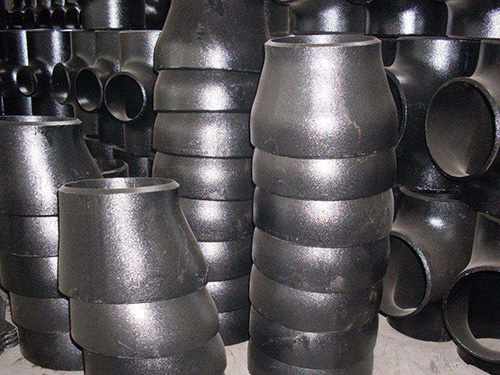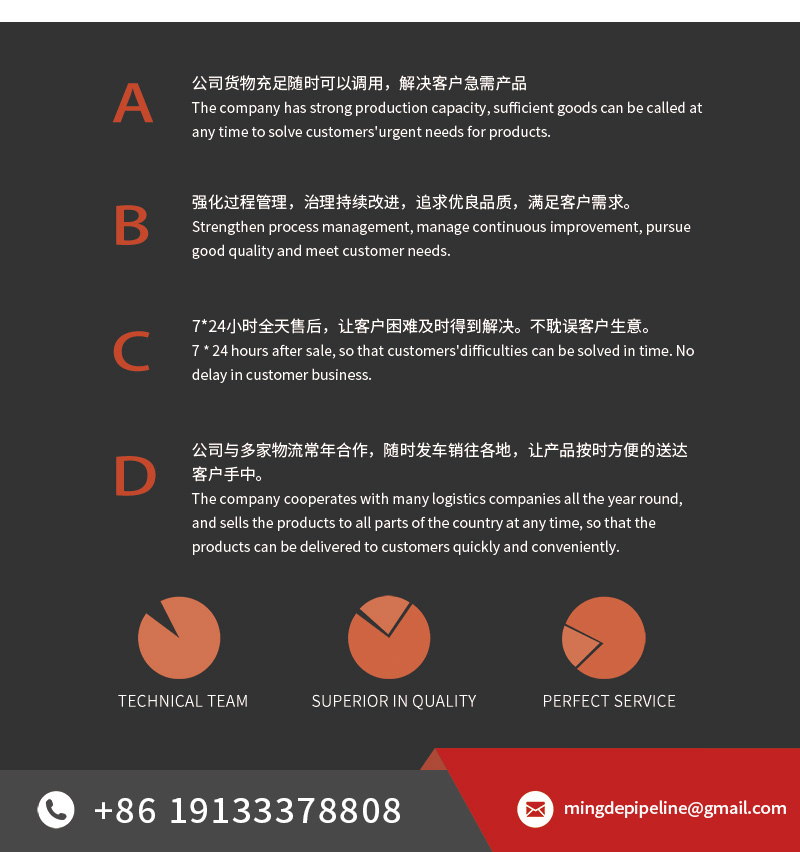
reducing pipe

A reducing pipe, also referred to as a pipe reducer, is an essential fitting used in piping systems to connect pipes of different diameters. Its primary function is to change the pipe size within a system, ensuring a smooth and efficient transition between larger and smaller pipe sections. Reducing pipes are critical for managing flow dynamics, system pressure, and compatibility between various pipe segments.
Reducing pipes are available in two main forms: concentric reducers, which have a symmetrical shape and align the centerlines of both pipes, and eccentric reducers, which have an offset design that aligns the bottom (or top) of the pipe, often used where drainage or air pockets must be considered. Both types offer specific advantages depending on the system's layout and performance requirements.
Functional Characteristics
The key role of a reducing pipe is to provide a safe and reliable connection between two pipes of unequal diameters while maintaining fluid flow efficiency. This transition helps control pressure drops, prevents turbulence, and supports the overall mechanical integrity of the pipeline. In addition, reducing pipes can accommodate different flow capacities, helping to adapt equipment or components to the rest of the system.
Reducing pipes are commonly made from durable materials such as carbon steel, stainless steel, alloy steel, and plastic, ensuring compatibility with various fluids, gases, and environmental conditions.
Key Advantages
Flow Optimization
A reducing pipe promotes streamlined flow from a larger to a smaller pipe (or vice versa), minimizing flow disturbance and energy losses.
Pressure Control
It helps regulate system pressure by adjusting the cross-sectional flow area, making it an essential component in high- or low-pressure applications.
Wide Compatibility
Reducing pipes are used in systems transporting water, steam, oil, chemicals, gas, and other media, making them suitable across multiple industries.
Space Efficiency
Particularly in systems with limited installation space, reducing pipes provide a compact and direct solution for diameter transitions without complex arrangements.
Enhanced System Safety
Proper use of reducers helps prevent stress concentrations and misalignments, reducing the risk of leaks, cracks, or equipment failure.
Typical Applications
Reducing pipes are widely used in industries such as:
Oil and Gas
Used in pipeline networks, refineries, and offshore platforms where smooth flow transitions are necessary.
Chemical and Petrochemical
Essential in processing plants to accommodate different pipeline sizes and control flow rates.
Water Treatment and Supply
Applied in water distribution systems and treatment plants for connecting pipes of varying sizes.
Power Generation
Found in power plants for steam, condensate, and cooling water pipelines.
HVAC Systems
Used in heating, ventilation, and air conditioning systems to adapt duct or pipe sizes and ensure efficient airflow.
Pharmaceutical and Food Processing
Employed in clean and sanitary pipeline systems to meet specific hygiene and flow requirements.
Material and Surface Options
Reducing pipes are manufactured in a range of materials depending on application demands:
Carbon Steel – For general industrial applications requiring strength and durability.
Stainless Steel – For corrosion resistance, cleanliness, and high-pressure environments.
Alloy Steel – For systems with elevated temperatures, pressure, or chemical exposure.
PVC/HDPE – For lightweight, cost-effective, and corrosion-resistant applications.
Surface treatments such as pickling, passivation, galvanizing, painting, or polishing can also be applied to enhance corrosion resistance and product longevity.
Installation and Design Flexibility
Reducing pipes are available in various connection types, including:
Butt-Weld – For seamless connections in high-pressure or high-temperature pipelines.
Socket-Weld or Threaded – For smaller sizes or systems that require easy assembly and disassembly.
Flanged Ends – For quick installation and maintenance access.
The shape and length of the reducer can be customized according to project needs, and reducers can be supplied in concentric or eccentric form based on fluid flow and installation layout.
Conclusion
A reducing pipe is a vital component in any pipeline system that requires transitions between different pipe sizes. It not only ensures fluid continuity and pressure regulation but also contributes to the structural and operational integrity of the entire system. Whether used in power plants, petrochemical industries, water distribution systems, or food-grade processing lines, reducing pipes play a key role in enabling efficient, safe, and reliable piping operations.
Their availability in a wide range of materials, configurations, and standards ensures they can be tailored to suit virtually any industrial need. As a result, reducing pipes are an indispensable part of modern pipeline engineering and system design.

 NEWS
NEWS
-
Lightweight Pipe Insulation Bracket Materials and Manufacturing Technology
2025-10-18 09:18:46
-
Industrial Safety Applications of Fire-Resistant Pipe Insulation Brackets
2025-10-17 09:06:27
-
Selection Guide for Insulation Brackets in High-Temperature Steam Pipelines
2025-10-15 09:30:05
-
Pipe Insulation Bracket Design and Safety Requirements for Petrochemical Plants
2025-10-14 07:34:37
 Contact us
Contact us
Mobile:+86 19133378808
Email:mingdepipeline@gmail.com
Website:https://www.mingdepipe.com
Address:Zhenggang Industrial Park, Yanshan County Economic Development Zone, Cangzhou City, Hebei Province




